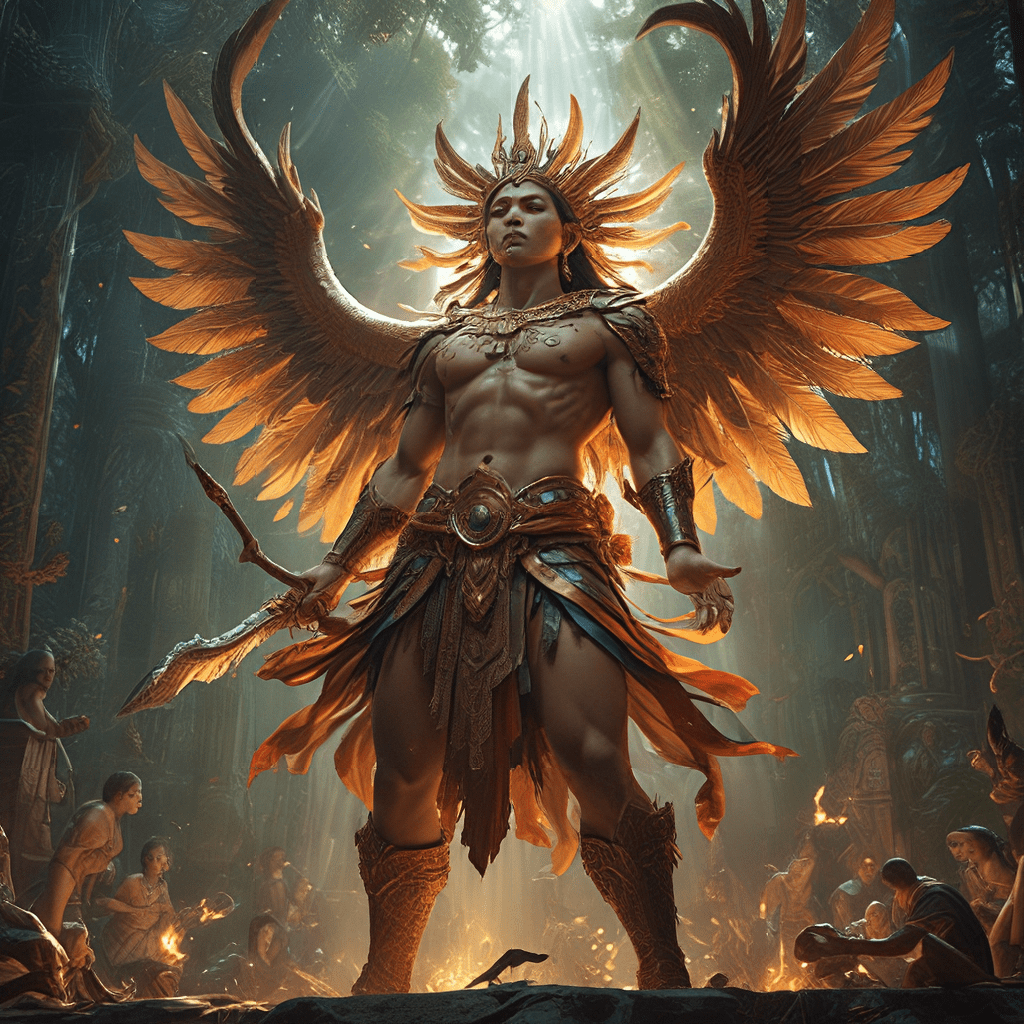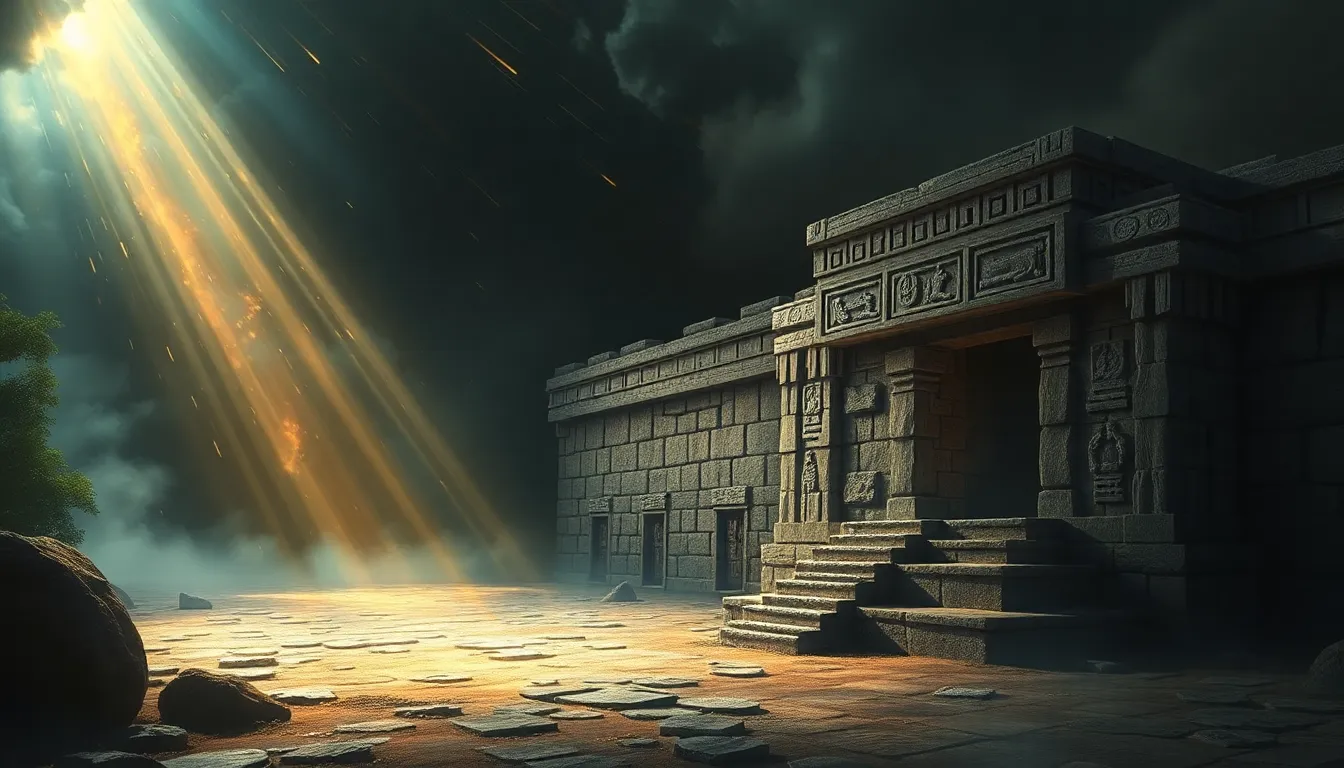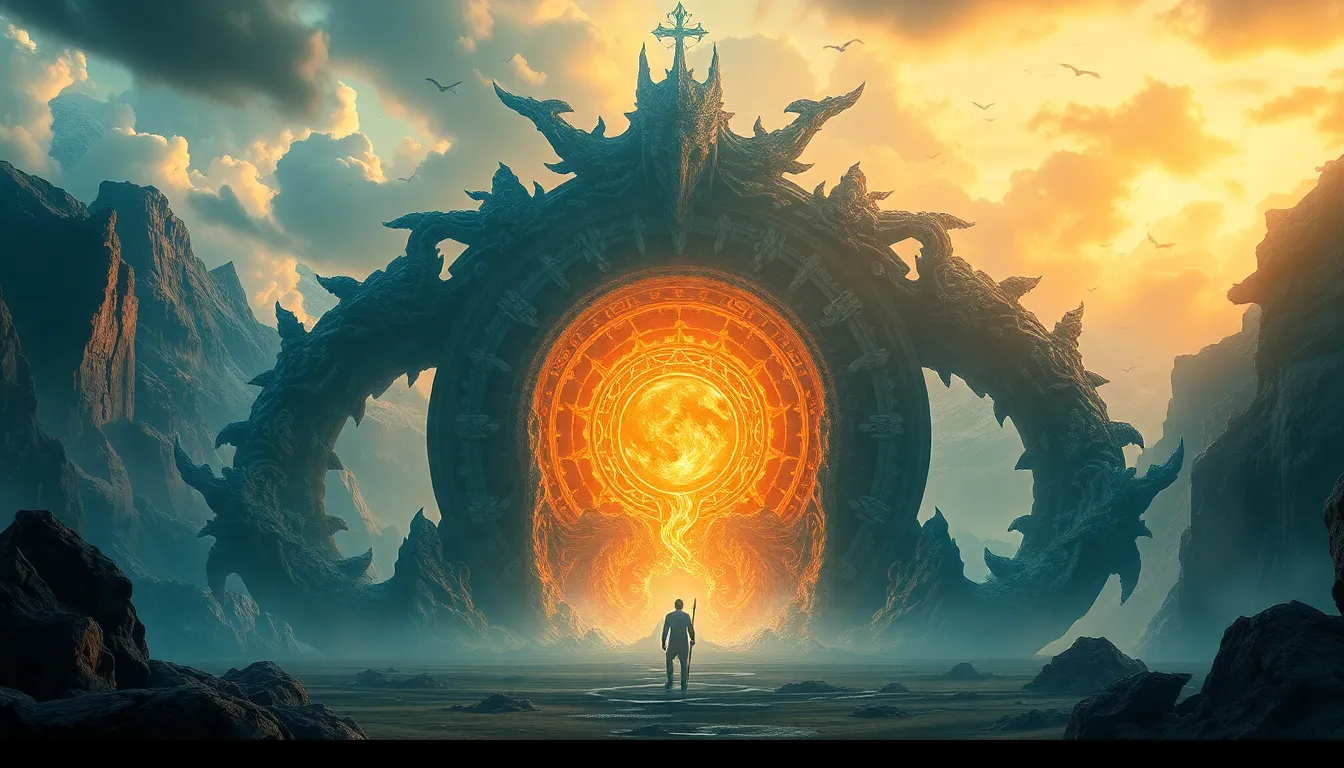Filipino Myths: Gods, Spirits, and Supernatural Abilities
1. The Realm of the Supernatural in Filipino Mythology
The Philippines, an archipelago of over 7,000 islands, boasts a rich and diverse culture deeply rooted in its mythology. From the ancient tales passed down through generations to the beliefs that still resonate in modern Filipino society, the supernatural plays a significant role in shaping their identity and understanding of the world. Filipino mythology, like many cultures, is a tapestry woven with stories of deities, spirits, and mythical creatures, each possessing unique powers and abilities that shape the destinies of mortals and the natural world.
These tales are not merely entertainment; they serve as a window into the Filipino worldview, offering insights into their values, beliefs, and relationship with the environment. By delving into the realm of the supernatural in Filipino mythology, we gain a deeper appreciation for the intricate relationship between the spiritual and the physical, the sacred and the mundane, which forms the very foundation of their cultural identity.
2. Diwata: Spirits of Nature and Guardians
Diwata are nature spirits who inhabit the natural world, from the towering mountains to the sparkling rivers and the lush forests. These benevolent beings are often seen as guardians, protectors of the environment and the people who live in harmony with it. In Filipino folklore, diwata are often associated with specific locations, such as trees, waterfalls, or caves, and their presence is believed to bring good fortune and prosperity.
Each diwata possesses unique abilities and powers, reflecting their connection to the natural world. Some are known for their healing abilities, while others have the power to control the elements. In some tales, diwata can even shape-shift, taking on the forms of animals or humans to interact with mortals.
The diwata are not deities, but rather intermediaries between the human world and the spiritual realm. They are often invoked in rituals and offerings, seeking their favor and protection in times of need. The deep respect for diwata reflects the close relationship Filipinos have with their environment and the belief that every element of nature holds a spiritual essence.
3. Kapre: The Giant Tree Dweller with Unnatural Strength
The Kapre, a giant, cigar-smoking creature, is a familiar figure in Filipino folklore. Often depicted as a towering being with green skin, long hair, and glowing red eyes, Kapre are known for their immense strength and mischievous nature. They are usually found dwelling in large trees, often near roads and paths, where they are said to lure travelers with their glowing eyes or the sound of their laughter.
Despite their intimidating appearance, Kapre are not inherently malicious. They are often portrayed as pranksters who enjoy playing tricks on humans, but they rarely cause serious harm. This mischievous side of the Kapre is a reminder of the playful side of nature, even in its most powerful forms.
The Kapre’s superhuman strength is a testament to the power of the natural world. They are often associated with trees, symbolic of growth, resilience, and the enduring qualities of the earth. The Kapre’s presence reminds Filipinos of the inherent power and mystery that lies within the natural world and the responsibility they have to respect and protect it.
4. Aswang: Shapeshifting Creatures of Darkness
Aswang, a term encompassing a variety of shapeshifting creatures, are a staple in Filipino folklore. These creatures are often feared and reviled, as they are known for their ability to transform into terrifying forms, their insatiable hunger for human flesh, and their connection to the dark forces of the night.
The most common form of the Aswang is the Manananggal, a creature that can detach its upper body and fly through the night in search of prey. Other forms include the Tikbalang, a creature with a horse-like head and a human body, and the Werewolf, a human who can transform into a wolf-like creature.
The Aswang represents the darker side of human nature, the fear of the unknown, and the dangers that lurk in the shadows. They are a reminder of the fragility of life and the need to be vigilant against those who would exploit the vulnerable.
5. Tikbalang: The Trickster Spirits of the Forests
The Tikbalang is a mischievous creature with a horse's head and a human body, often depicted with a horn on its forehead and hooves for feet. These spirits are known for their love of pranks and their ability to lead travelers astray in the forests. They are said to inhabit the forests, often appearing as a friendly guide, only to lead travelers down wrong paths or lure them into dangerous situations.
Despite their mischievous nature, Tikbalangs are not inherently evil. They are often seen as guardians of the forests, protecting their domains from harm. However, they are also known for their erratic behavior, their unpredictable moods, and their fondness for tricking unsuspecting humans.
The Tikbalang's ability to mislead travelers is a reflection of the dangers of the natural world, the importance of being aware of one's surroundings, and the need to respect the forces of nature that can be both benevolent and capricious.
6. The Power of Enchantments: Spells and Charms in Filipino Folklore
In Filipino mythology, the supernatural world isn't just about creatures with extraordinary abilities; it's also about the power of magic. Enchantments, spells, and charms are woven into the fabric of Filipino folklore, reflecting the belief that humans can harness spiritual forces to influence their lives and the world around them. These practices are often associated with healers, shamans, and mediums who possess the knowledge and skills to communicate with spirits and manipulate the flow of magical energy.
Enchantments are used for various purposes, from healing the sick to protecting oneself from harm to influencing the course of events. Some common types of enchantments include:
- Anting-anting: These are amulets or charms worn for protection and good luck. They can be made from various materials, like wood, metal, or even animal parts, and are often inscribed with magical symbols or imbued with the power of specific spirits.
- Gayuma: These are love potions or spells used to attract or influence the affections of someone. They are often associated with powerful spirits of love and desire and can be used for good or evil depending on the intentions of the practitioner.
- Pasalubong: These are gifts given to a person returning from a journey, often imbued with protective magic to ward off harm or bad luck.
The use of enchantments in Filipino folklore reflects a belief in the power of the mind and the ability of humans to connect with the spiritual world. These practices are often intertwined with rituals and offerings, demonstrating the importance of respect and gratitude to the forces that govern the supernatural realm.
7. The Significance of Rituals and Offerings
Rituals and offerings play a crucial role in Filipino mythology, serving as a bridge between the human world and the supernatural realm. These practices are seen as a way to honor deities, appease spirits, and seek their favor and protection. They are often performed at specific times of the year, during important life events, or in times of need.
Some common rituals include:
- Panalangin: This refers to prayers, which are often performed to ask for guidance, protection, or healing from deities or spirits.
- Handog: This refers to offerings, which can be anything from food and drink to flowers, incense, or even animals. These offerings are intended to appease spirits or show gratitude for their favor.
- Bayanihan: This is a tradition of communal cooperation, often involving a group of people working together to perform a task, like building a house or celebrating a festival. This spirit of collective action is often seen as a way to channel positive energy and seek the blessings of the spirits.
Through these rituals and offerings, Filipinos express their deep respect for the supernatural world and acknowledge their dependence on its forces. These practices are not just mere superstitions; they are a reflection of their cultural identity and their understanding of the interconnectedness of life.
8. The Origin and Evolution of Supernatural Beliefs
Filipino mythology, with its diverse cast of deities, spirits, and enchantments, has roots in a long and complex history. The origin of these beliefs can be traced back to pre-colonial times, when the Philippines was inhabited by various indigenous tribes who developed unique spiritual traditions influenced by their environment, experiences, and cultural values.
The arrival of Spanish colonizers in the 16th century brought about a significant shift in religious practices, with the introduction of Christianity. However, many indigenous beliefs and practices persisted, often being absorbed into existing Christian traditions. This blending of cultures resulted in a unique form of Filipino mythology, where indigenous deities and spirits coexist alongside Christian saints and angels.
The evolution of supernatural beliefs in the Philippines is a continuous process, shaped by ongoing interactions between traditional beliefs and modern influences. The development of new media, urbanization, and globalization have all contributed to the evolving nature of Filipino mythology, with traditional beliefs being reinterpreted and reimagined in new ways.
9. Supernatural Powers in Modern Filipino Culture
Supernatural powers and abilities continue to play a role in modern Filipino culture, albeit in different ways than they did in the past. While formal belief in deities and spirits may have declined in some urban areas, many Filipinos still hold onto certain traditional practices and beliefs. These can range from simply respecting the spirits of nature to seeking the help of healers and mediums for various life challenges.
Modern media and entertainment have also contributed to the enduring influence of supernatural beliefs, with television shows, movies, and literature often featuring themes and characters inspired by Filipino mythology. This has led to a renewed interest in traditional stories and beliefs, particularly among younger generations, who are exposed to these themes through popular culture.
10. Exploring the Role of Supernatural Beliefs in Filipino Identity
Supernatural beliefs are integral to understanding Filipino identity. These beliefs offer a framework for understanding the world, navigating life's challenges, and connecting with the natural world. They serve as a source of comfort, guidance, and a sense of belonging. They provide a rich tapestry of stories and experiences that have been passed down through generations, shaping their values, traditions, and worldview.
By exploring the role of supernatural beliefs in Filipino identity, we gain a deeper appreciation for this rich cultural heritage and the unique ways in which it shapes their understanding of the world. These myths and legends offer a window into the soul of the Filipino people, revealing their deep connection to the spiritual realm and their enduring belief in the power of the supernatural.
FAQ
Q: What are some of the most famous Filipino mythical creatures?
A: Some of the most famous Filipino mythical creatures include the Kapre, a giant tree dweller, the Aswang, a shapeshifting creature that eats human flesh, and the Tikbalang, a creature with a horse's head and a human body.
Q: What is the significance of the diwata in Filipino mythology?
A: Diwata are benevolent spirits of nature who are seen as guardians of the environment and the people who live in harmony with it. They are often invoked in rituals and offerings to seek their favor and protection.
Q: How do Filipinos use enchantments in their daily lives?
A: Filipinos use enchantments for various purposes, from healing the sick to protecting themselves from harm. Amulets, charms, and spells are often used to ward off bad luck and attract good fortune.
Q: What is the role of rituals and offerings in Filipino culture?
A: Rituals and offerings are important practices in Filipino culture, serving as a way to honor deities, appease spirits, and seek their favor and protection. These practices are often performed at specific times of the year, during important life events, or in times of need.
Q: Why is Filipino mythology important to understand Filipino identity?
A: Filipino mythology is an integral part of understanding Filipino identity. These beliefs offer a framework for understanding the world, navigating life's challenges, and connecting with the natural world. They provide a rich tapestry of stories and experiences that have been passed down through generations, shaping their values, traditions, and worldview.



